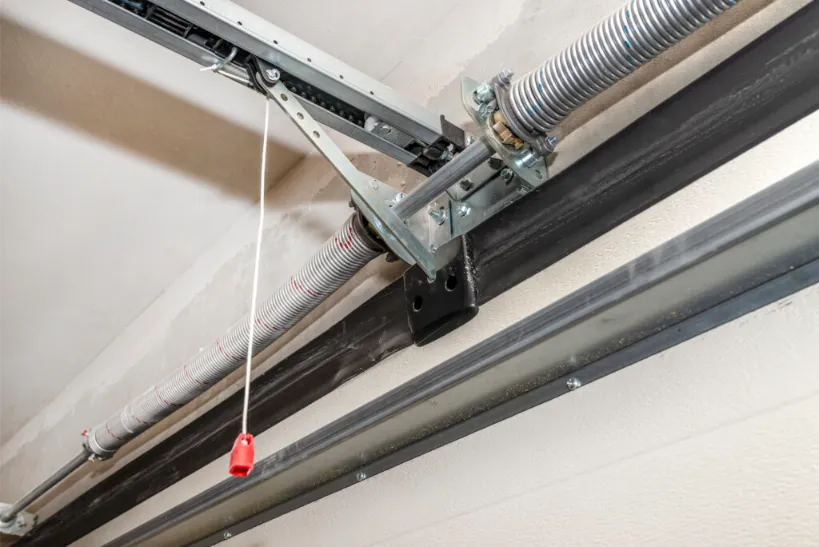Your garage door is one of the most important parts of your home. It not only protects your car and belongings but also adds to the overall look of your house. But have you ever wondered what makes your door open and close smoothly? The answer lies in the types of garage door springs used in your system. These springs are the unsung heroes that bear the weight of the door, allowing it to move up and down with ease.
There are different types of springs, and knowing about them can help you understand your door better. Whether you have an automatic opener or open the door manually, these components play a crucial role. If you’ve ever faced a broken torsion spring or needed a coil replacement, you’ll know how essential they are.
In this article, we’ll learn about the different types of garage door springs and why they matter.
Why Understanding Different Types of Spring Types Matter
Garage door springs are not one-size-fits-all. The type of spring system your garage door uses affects how the door operates, how long the springs last, and how safe the door is. Different types of garage door springs handle the weight of the garage door in different ways. For instance, some springs stretch to store energy, while others twist. Understanding these differences can help you when it comes time for garage door repair or spring replacement.

Most Important Spring Types:
Looking anywhere online, you’ll see that the 2 most prominent types of garage door springs are Extension springs and Torsion springs. This makes is easy to look out for the benefits and drawbacks of the springs you want. as there is not much to keep up with. So let’s take a look at an overview of each, as well as the benefits and withdrawls.e
Extension Springs
Extension springs are one of the most common types of garage door springs used in residential garage doors. They are located on each side of the door, running along the garage door tracks. These springs stretch and store energy when the door is closed and release it when the door opens. Extension springs stretch to handle the weight of the door, making it easier to open your garage door manually or with a garage door opener.
Each door typically has two extension springs, one on each side of the garage door. When the door is open, the springs are relaxed, and when the door is closed, they are stretched. If one of the springs breaks, the door can become unbalanced, making it difficult or dangerous to operate.
Extension springs store a lot of energy, so it’s important to handle them carefully, especially during a spring replacement. Understanding this type of garage door spring can help you maintain your garage door system better.
Torsion Springs
Torsion springs are another common type of garage door spring, often found in newer garage door systems. Unlike extension springs that stretch, torsion springs twist to store energy. They are mounted above the garage door opening on a torsion shaft. When the door closes, the torsion springs wind up, storing energy. When the door opens, the springs unwind, releasing the energy to lift the door.
Torsion springs are known for their durability and are considered safer than extension springs. They provide smoother operation and better balance, which reduces wear on other parts of your garage door system. Standard torsion springs can handle heavy doors and are less likely to break compared to extension springs.
However, if a torsion spring does break, it’s important to contact a professional garage door service for spring repair, as they can be dangerous to replace on your own. Knowing this type of garage door spring can help you make informed decisions about your garage door maintenance.
Extension Vs. Torsion Springs
When comparing extension and torsion springs, it’s important to consider the needs of your garage door. Extension springs are usually less expensive and are found in older or smaller garage doors. They are easier to install but require more maintenance. On the other hand, torsion springs use a torsion spring system that offers better control and balance. Torsion springs may cost more upfront, but they last longer and provide smoother operation.
One key difference is how they handle the weight of the door. Extension springs stretch to support the door, while torsion springs twist. This difference affects how the door opens and closes. Torsion springs provide a steadier motion, reducing the chances of the door becoming unbalanced.
Which Type of Garage Door Spring Is Best For You?
Choosing the best type of garage door spring depends on your door’s weight, usage frequency, and budget. Torsion springs are ideal for heavier or frequently used doors due to their durability and efficiency in handling the door’s weight, also reducing wear on your garage door opener.
Extension springs are more cost-effective for lighter doors but may require more frequent replacements. Consulting a professional ensures you select and install the right springs safely.

Conclusion
In conclusion, understanding the different types of garage door springs can really make a difference in your home’s safety and convenience. Whether you choose extension or torsion springs, knowing how they work helps you avoid problems and saves you time and money later on. Regular maintenance and professional installation keep your garage door running smoothly. Don’t wait for a broken spring to cause trouble—take steps now to ensure your garage door system is reliable and efficient. A well-maintained garage door not only looks good but also makes your daily life easier and more secure.
